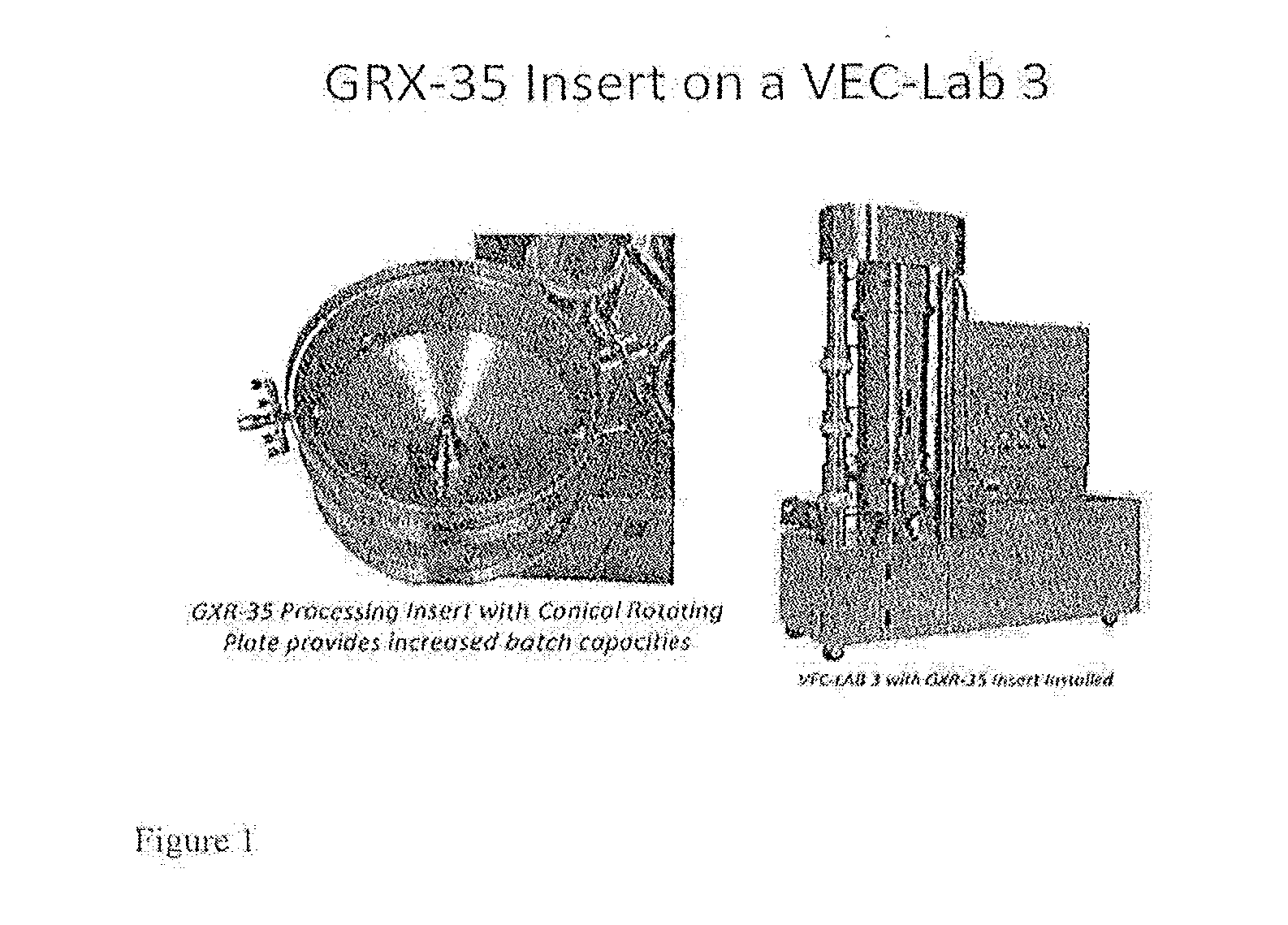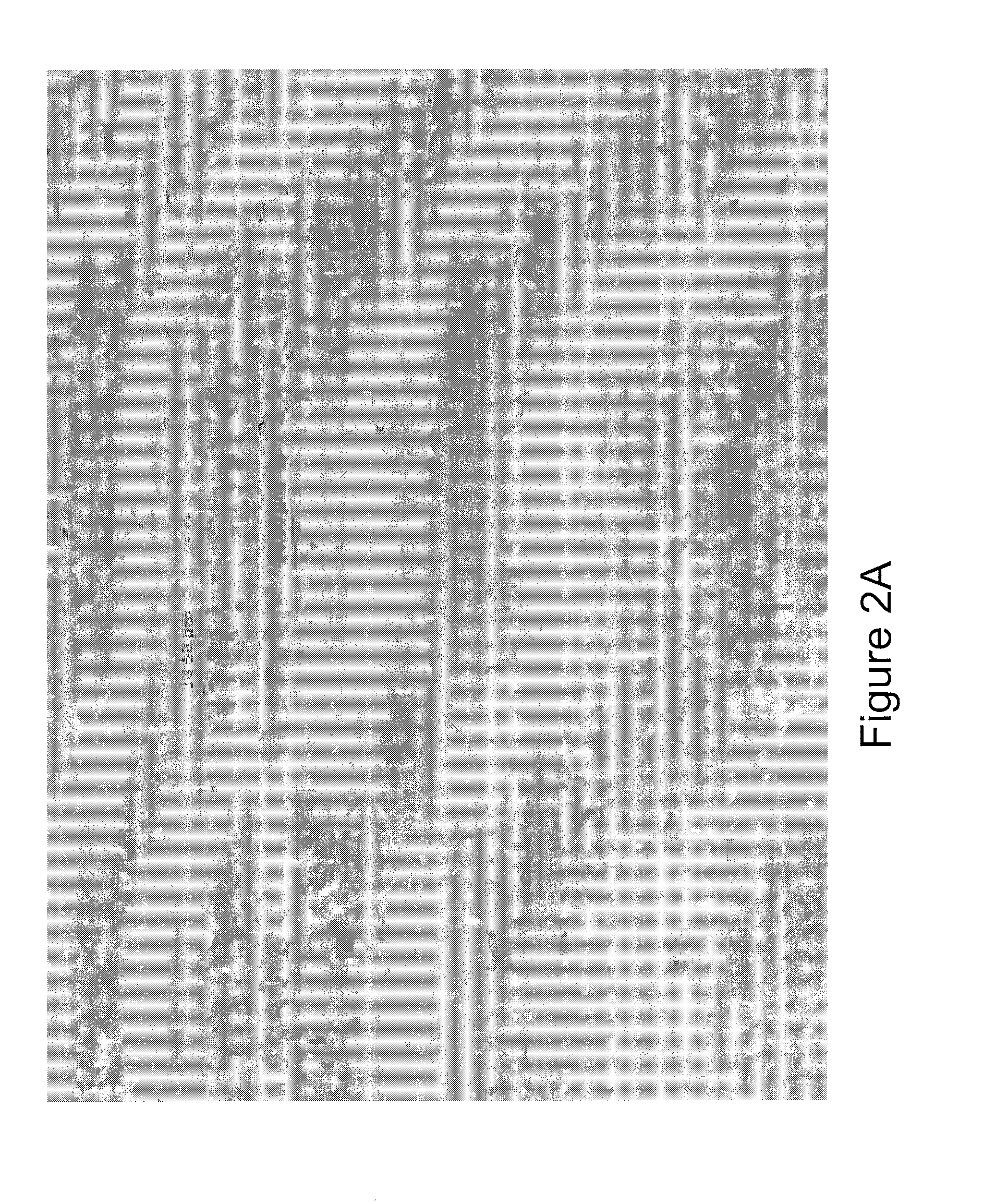Micropellet compositions comprising pancreatin containing digestive enzyme mixture
- Summary
- Abstract
- Description
- Claims
- Application Information
AI Technical Summary
Benefits of technology
Problems solved by technology
Method used
Image
Examples
example 1
Gastroresistant Coating of Micropellets (Weight Gain: 28 Wt. %)
[0093]A batch of micropellets gastroresistant coated with a solution of HP-55 / DEP at 80 / 20 in 100% acetone containing 10 g talc for a coating level of 28 wt. % using micropellets (LotS2) is also prepared. Process conditions—product temperature: 31-33.52° C.; process air volume: 65-70 CFM; spray rate: 15-30 g / min.
Example 2
Example 2.A
Pancrelipase Micropellets by Powder layering
[0094]Povidone (PVP K-30; 50 g) is slowly added to isopropanol (650 g) while constantly stirring to prepare a polymer binder solution at 7% w / w solids. Pancrelipase (LotS1) from Scientific Protein Laboratories (2000 g) is blended with 10 g of colloidal silica (a flow aid, Syloid from WR Grace Co.) and povidone (50 g) in a V-blender. Sugar spheres (60-80 mesh or 170-250 μm in diameter) are charged into the product bowl of Granurex GX-35 from Vector Corporation (Iowa, USA). The 7% PVP binder solution is sprayed into the rotating material bed at a contr...
example 2
Gastroresistant Coating of Micropellets (Weight Gain: 30 Wt. %)
[0095]The micropellets from Ex. 2.A above are coated with the gastroresistant polymer HP-55 / TEC / talc (ratio: 10 / 1 / 5) at a coating level of 30 wt. % (LotS5) in the Granurex GX-35. Hypromellose phthalate (HP-55) is slowly added into acetone in a stainless steel tank while constantly stirring to dissolve. Triethyl citrate (TEC) is added to the solution to dissolve, and talc (an alkalinizing agent) is added to the coating solution to achieve a homogeneous dispersion. Process conditions—product temperature: 37-42° C.; process air velocity: about 5-60 m / s.
Example 3
Example 3.A
Pancrelipase Micropellets by Controlled Spheronization
[0096]Povidone (PVP K-30; 50 g) is slowly added to 90 / 10 isopropanol / purified water while constantly stirring to prepare a polymer binder solution at 7% w / w solids. Pancrelipase powder from SPL (2000 g) is blended with 10 g of colloidal silica (a flow aid, Cab-O-Sil M-5P from Cabot Corporation) and povi...
example 3
Moisture Resistant Coating of Micropellets
[0097]Klucel LF is slowly added to dehydrated ethanol in a stainless steel tank while constantly stirring to dissolve. Ethylcellulose (EC-10) is slowly added to the Klucel solution while constantly stirring to dissolve. Magnesium stearate (Mgst) is added to the coating solution to achieve a homogeneous dispersion. A Glatt GPCG 3 equipped with a 6″ bottom spray Wurster 8″ high column, partition column gap of 15 mm from the ‘D’ bottom air distribution plate covered with a 200 mesh product retention screen (1.0 mm port nozzle) is charged with the micropellets (1200 g) from Example 3.A, above and coated with the protective moisture resistant coating solution (10 wt. % solids of Klucel / EC-10 / Mgst at a ratio of 30 / 45 / 25) at 5 mL / min, ramping up to about 20 mL / min.
PUM
| Property | Measurement | Unit |
|---|---|---|
| Temperature | aaaaa | aaaaa |
| Length | aaaaa | aaaaa |
| Fraction | aaaaa | aaaaa |
Abstract
Description
Claims
Application Information
 Login to View More
Login to View More - R&D
- Intellectual Property
- Life Sciences
- Materials
- Tech Scout
- Unparalleled Data Quality
- Higher Quality Content
- 60% Fewer Hallucinations
Browse by: Latest US Patents, China's latest patents, Technical Efficacy Thesaurus, Application Domain, Technology Topic, Popular Technical Reports.
© 2025 PatSnap. All rights reserved.Legal|Privacy policy|Modern Slavery Act Transparency Statement|Sitemap|About US| Contact US: help@patsnap.com



